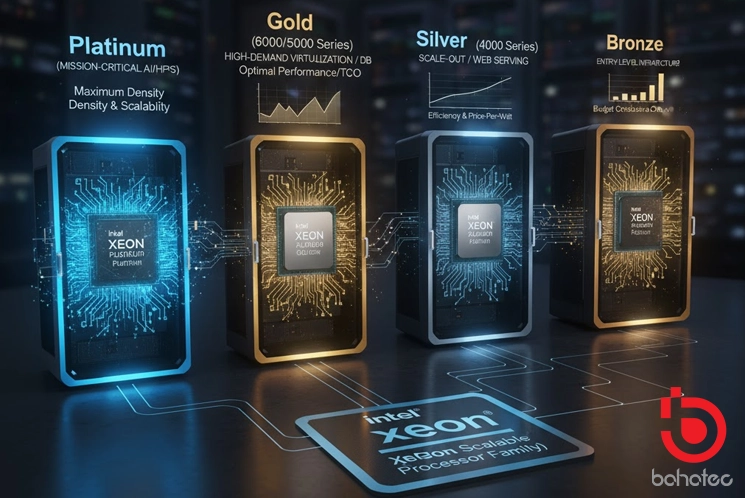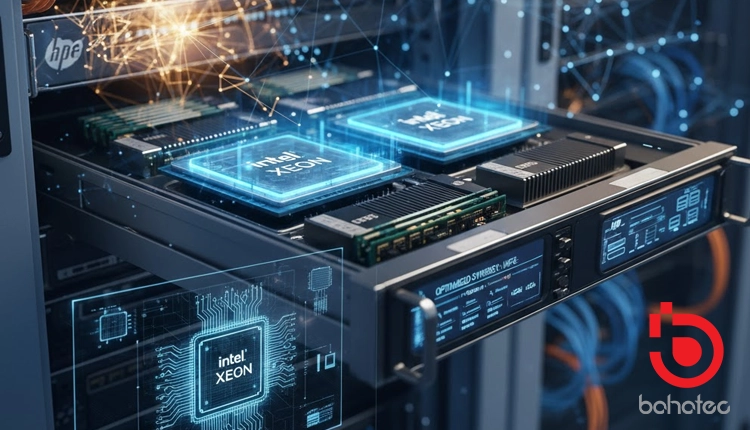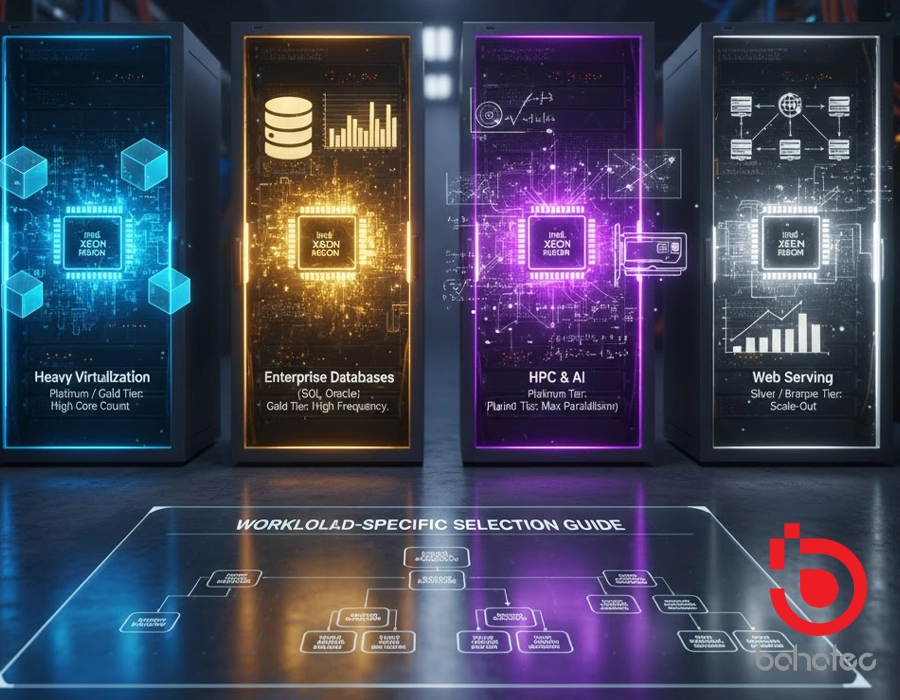Why Intel Xeon is the Ideal CPU for HPE Servers
In the world of enterprise IT, the server is the bedrock of digital operations. For businesses relying on HPE ProLiant or Synergy platforms, selecting the right Central Processing Unit (CPU) isn’t just a technical decision—it’s a critical investment in performance, scalability, and Total Cost of Ownership (TCO). This guide explores why Intel Xeon Scalable processors are the gold standard for HPE servers and provides a technical breakdown to help customers make an informed choice.
The Synergy: Why Intel and HPE Are Inseparable
HPE designs its server architecture to fully harness the capabilities of Intel Xeon processors. This deep integration offers several core advantages:
- Optimized Architecture: HPE’s BIOS and System ROM are specifically tuned to maximize Intel’s power management and turbo features. This co-engineering ensures that an Intel Xeon CPU delivers its theoretical maximum performance within an HPE enclosure.
- Security Integration: Intel’s security features, such as Software Guard Extensions (SGX) and Trust Domain Extensions (TDX) (in newer generations), are integrated directly into HPE’s Silicon Root of Trust security framework. This provides a multi-layered security approach, securing the platform from the silicon up.
- Scalability and Density: HPE server chassis are designed to support the massive core counts and large memory channels of Xeon CPUs, particularly for multi-socket configurations (e.g., HPE ProLiant DL380 with two sockets).
Intel Xeon Scalable Family: A Technical Overview
Intel’s modern server CPU lineup is categorized under the Xeon Scalable Processor (SP) family, currently in its 4th and 5th Generation (codenamed Sapphire Rapids and Emerald Rapids, respectively). These are segmented into distinct tiers based on core count, cache size, clock speed, and support for advanced features.

Architectural Innovations (4th/5th Gen SP)
The modern Xeon SP architecture brings crucial performance drivers for HPE servers:
- DDR5 Memory Support: Provides significantly higher memory bandwidth, crucial for memory-intensive applications like in-memory databases (SAP HANA).
- PCIe 5.0: Doubles the I/O bandwidth compared to PCIe 4.0, essential for high-speed NVMe SSDs, network adapters (100G/200G), and GPUs (e.g., NVIDIA H100). HPE servers utilize this for maximum throughput.
- Built-in Accelerators: Intel integrates specialized accelerators directly into the silicon, which can be leveraged by HPE’s software stacks:
- Intel QuickAssist Technology (QAT): Speeds up encryption and compression tasks (critical for networking and storage).
- Intel Data Streaming Accelerator (DSA): Improves data movement efficiency, reducing CPU overhead.
- Intel Advanced Matrix Extensions (AMX): Dedicated instruction set for accelerating matrix multiplication in AI and Deep Learning workloads.
Workload-Specific Selection Guide
Choosing the right Xeon tier must align directly with the server’s primary function:
Pricing and Value Analysis (TCO)
The cost difference between a Bronze and a Platinum processor is substantial, but focusing solely on the sticker price (Capital Expenditure – CapEx) is a mistake. The true measure is the Total Cost of Ownership (TCO), factoring in operational expenses and performance density.
- Xeon Bronze/Silver: Offers the lowest CapEx. Ideal when scaling horizontally is feasible (adding more lower-cost servers). The value is in price-per-server.
- Xeon Gold: Represents the best price-per-core and performance-per-watt balance. By providing excellent performance in a 2-socket HPE DL380, it often allows companies to consolidate older workloads onto fewer physical servers, drastically lowering licensing costs (which are often core-based) and reducing power/cooling costs (OpEx). This is typically the optimal choice for overall TCO.
- Xeon Platinum: Highest CapEx. Its value is unlocked only in mission-critical environments where multi-socket performance (4-socket and beyond) or specific, licensed features (like the highest AMX capabilities) are non-negotiable. Its value is in maximum performance density.
A technical procurement team should always model the TCO: (CapEx of Hardware + Core-based Software License Costs + Power/Cooling Costs) / Workload Capacity. This calculation almost always highlights the efficiency of the Gold tier for the majority of enterprise tasks.
Conclusion and Call to Action
The tight coupling between Intel Xeon Scalable processors and HPE’s industry-leading server platforms ensures that you are deploying a robust, high-performance, and secure foundation for your enterprise workloads. Whether you require the extreme density of Platinum for AI or the optimal TCO of Gold for virtualization, selecting the right Xeon CPU is key to future-proofing your IT infrastructure.
Don’t compromise on the heart of your data center. Our experts specialize in HPE server configurations and possess deep knowledge of the Intel Xeon Scalable lineup. Bahatec can provide you with a tailored TCO analysis to determine the precise Xeon tier that maximizes your ROI while meeting your performance requirements.
Ready to power your enterprise with optimized Intel/HPE synergy?
📞 Contact us today for a free, no-obligation server consultation and receive a customized quote on the perfect HPE ProLiant configuration featuring the latest Intel Xeon Scalable Processors.



